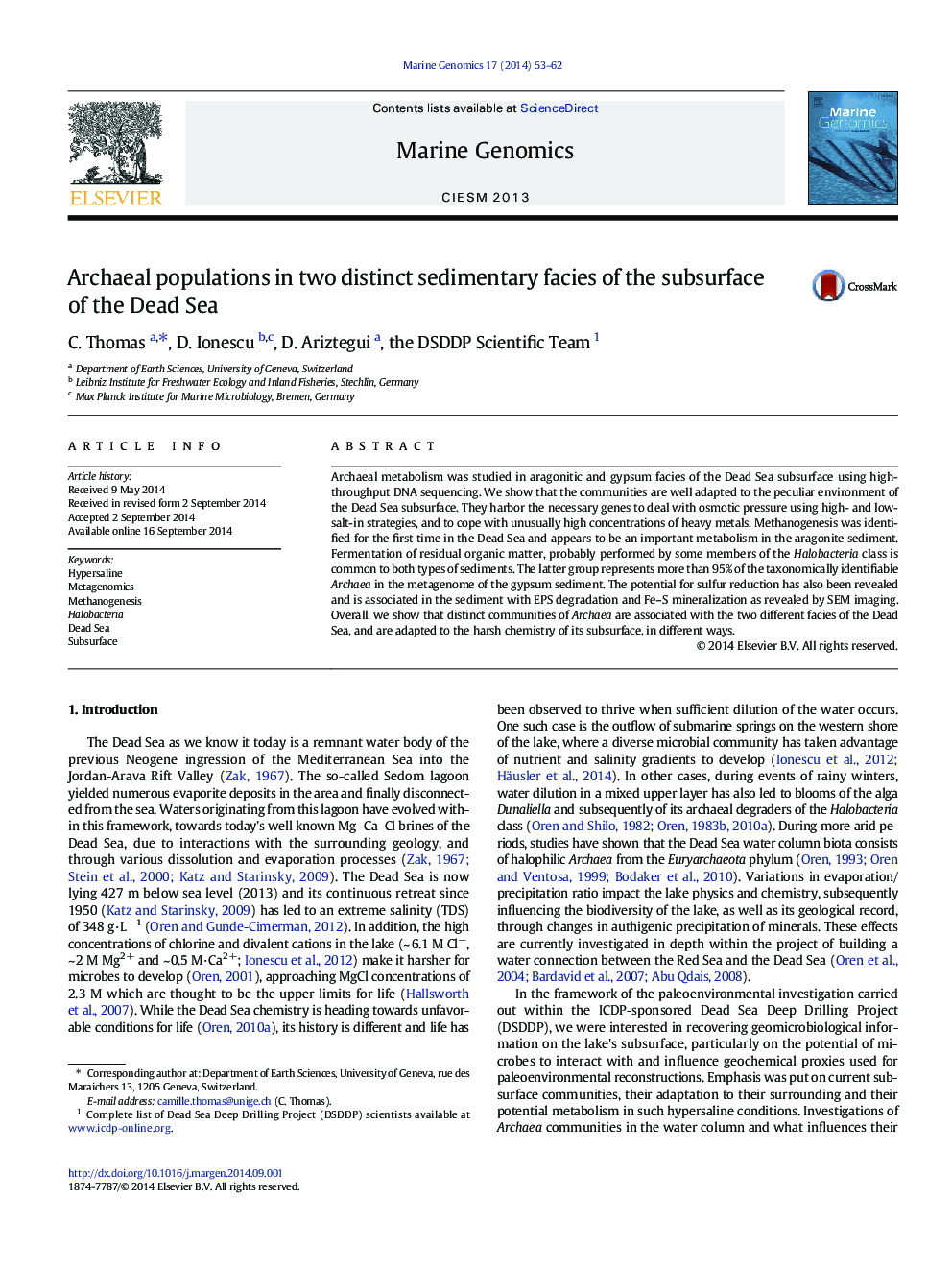| Article ID | Journal | Published Year | Pages | File Type |
|---|---|---|---|---|
| 2058167 | Marine Genomics | 2014 | 10 Pages |
Archaeal metabolism was studied in aragonitic and gypsum facies of the Dead Sea subsurface using high-throughput DNA sequencing. We show that the communities are well adapted to the peculiar environment of the Dead Sea subsurface. They harbor the necessary genes to deal with osmotic pressure using high- and low-salt-in strategies, and to cope with unusually high concentrations of heavy metals. Methanogenesis was identified for the first time in the Dead Sea and appears to be an important metabolism in the aragonite sediment. Fermentation of residual organic matter, probably performed by some members of the Halobacteria class is common to both types of sediments. The latter group represents more than 95% of the taxonomically identifiable Archaea in the metagenome of the gypsum sediment. The potential for sulfur reduction has also been revealed and is associated in the sediment with EPS degradation and Fe–S mineralization as revealed by SEM imaging. Overall, we show that distinct communities of Archaea are associated with the two different facies of the Dead Sea, and are adapted to the harsh chemistry of its subsurface, in different ways.
